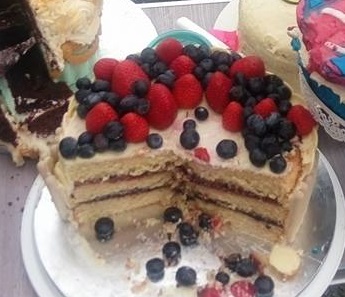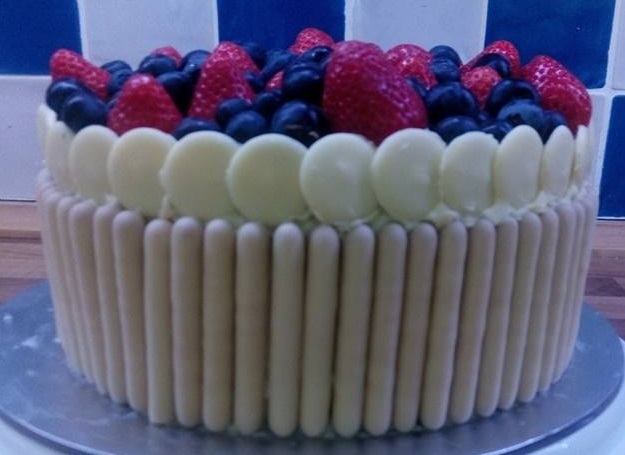The cliché of Covid lockdown! Given that we are halfway through moving to France, half of our kitchen equipment is in France and half here. Which means that we’ve had to be resourceful in coming up with recipes that don’t require weighing scales, or indeed loaf tins. The lack of a loaf tin was sorted when we realised that we had some large foil takeaway tins which were roughly the right size. The lack of weighing scales? Look up American recipes that use cups! One cup is roughly 240ml of volume, so as long as you use the same cup or small measuring jug to measure out all the ingredients you should be OK with quantities. This made two small loaves.
- 4 overripe bananas
- 1/2 cup neutral tasting vegetable oil (sunflower, rapeseed, etc.)
- 1 cup light brown sugar (or mix of white and brown)
- 3 cups self raising flour
- 1 heaped teaspoon bicarbonate of soda
- 1 cup walnuts, roughly chopped
- 1 heaped teaspoon cinnamon
- 2 teaspoons vanilla extract
- 1 teaspoon salt
- more brown sugar for sprinkling on top
Pre-heat your oven to about 180 degrees C. Smear some oil into your loaf tins (or clean foil takeaway tins). You could line it with greaseproof paper too, as long as you oil it lightly as well.
Peel the bananas, put them into a large mixing bowl, and mash them to a pulp with a fork. Stir in the sugar and vanilla until they are all combined nicely.
Add the flour, salt, cinnamon and bicarb and stir the entire mixture until it’s come together. Don’t beat it or you’ll have a flat loaf.
Add the walnuts and fold them in. For variation you could use sultanas or pecans. Split the resulting mixture between the two loaf tins and sprinkle the tops with a bit of brown sugar. Put in the middle of your oven and bake for about 45 – 55 minutes.
Take out of the oven, let cool for about 15 minutes and then turn out. The advantage of using takeaway foil containers is that you can just peel the foil down and cut the bread without turning them out onto a rack.
UPDATE JANUARY 2022
In the true spirit of “bung-it-in” cookery, I experimented yesterday with this recipe when I had only two mushy bananas but still wanted to make a cake. In France you can get squeezy pouches of apple puree called Pom’Potes, aimed at children but a very good substitute for apple sauce. I added two pouches to the mix as a replacement for two bananas, and it turned out absolutely fine. Each pouch contains about 90g of apple sauce, so that works out at 90g of apple sauce to replace each banana.



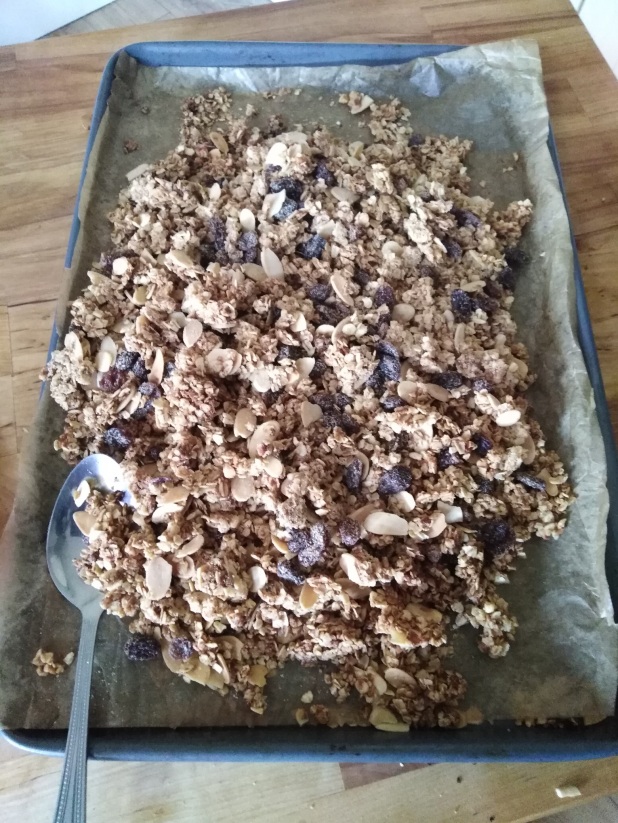
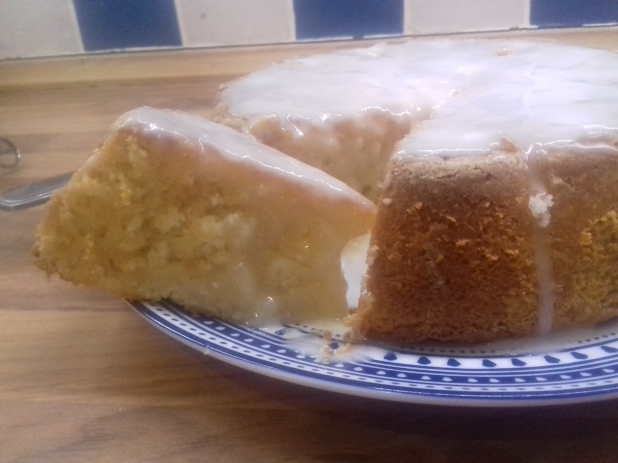
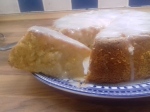 lly cooled, put it on a pretty serving plate and spoon the other half of the icing over it. You can get fancy now and make the icing drip down the sides.
lly cooled, put it on a pretty serving plate and spoon the other half of the icing over it. You can get fancy now and make the icing drip down the sides.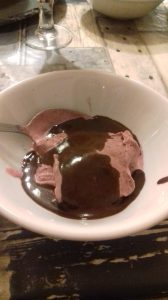 How easy is this? It’s also low carb – no added sugar – and totally delicious. This quantity serves about 4. Or just me when I feel like icecream.
How easy is this? It’s also low carb – no added sugar – and totally delicious. This quantity serves about 4. Or just me when I feel like icecream.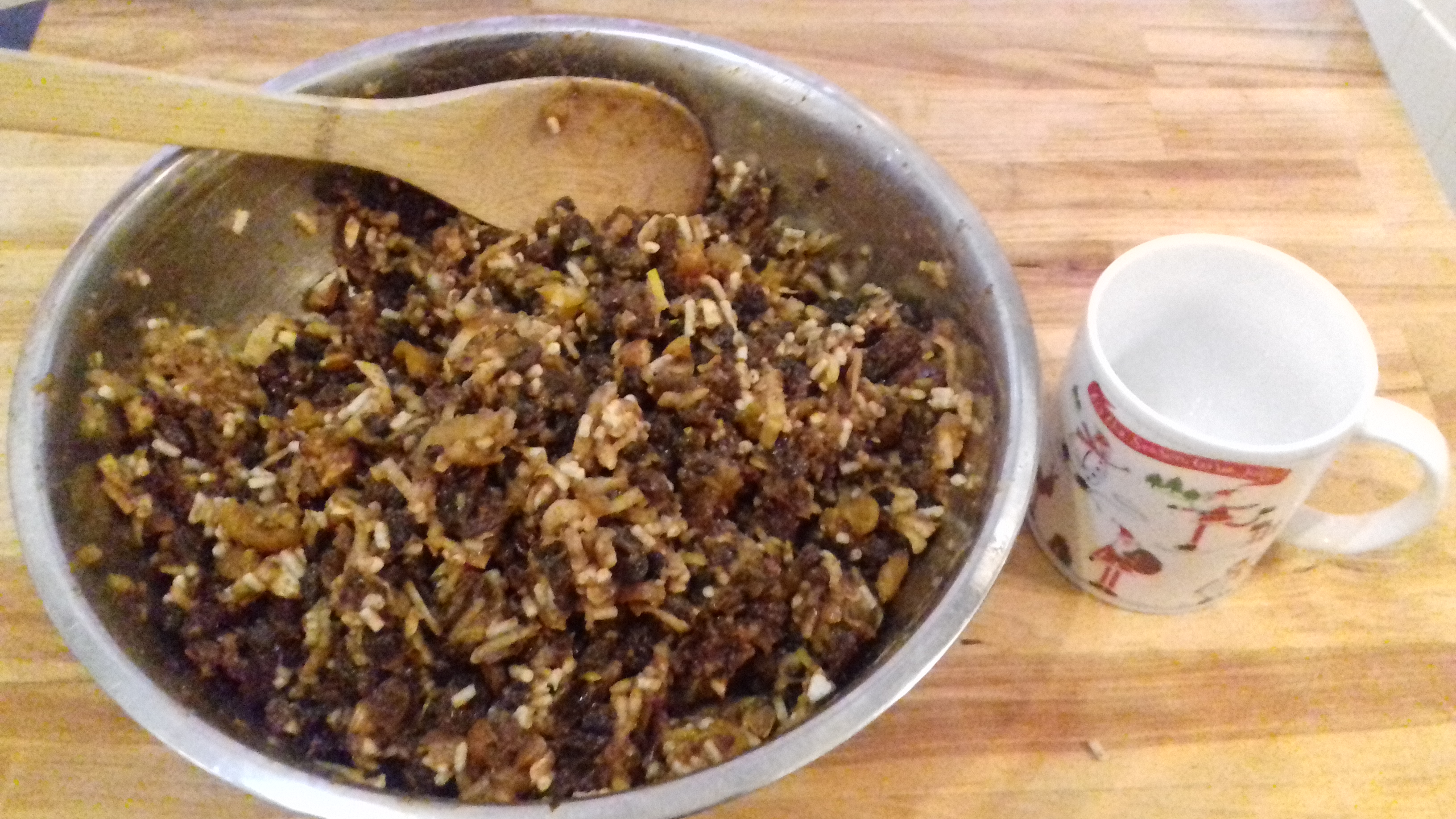 I know I’ve written about mincemeat before, but we’ve been on a bit of a dietary adventure over the past six months, eating a low carb/high fat diet to alleviate Chris’s Type 2 diabetes – and it’s worked! So we’ve been thinking about adapting many of our favourite recipes to cut down on the carbohydrates. This version of mincemeat contains only 50g of added “half and half” sucrose/stevia. It is not low-calorie, as the dried fruits contain high levels of fructose, but this is absorbed more slowly than other sugars and so is better for diabetics. In any case there’s only a heaped teaspoon of mincemeat in a mince pie anyway. Oh, and it’s also suitable for vegans as it contains no animal products.
I know I’ve written about mincemeat before, but we’ve been on a bit of a dietary adventure over the past six months, eating a low carb/high fat diet to alleviate Chris’s Type 2 diabetes – and it’s worked! So we’ve been thinking about adapting many of our favourite recipes to cut down on the carbohydrates. This version of mincemeat contains only 50g of added “half and half” sucrose/stevia. It is not low-calorie, as the dried fruits contain high levels of fructose, but this is absorbed more slowly than other sugars and so is better for diabetics. In any case there’s only a heaped teaspoon of mincemeat in a mince pie anyway. Oh, and it’s also suitable for vegans as it contains no animal products.
